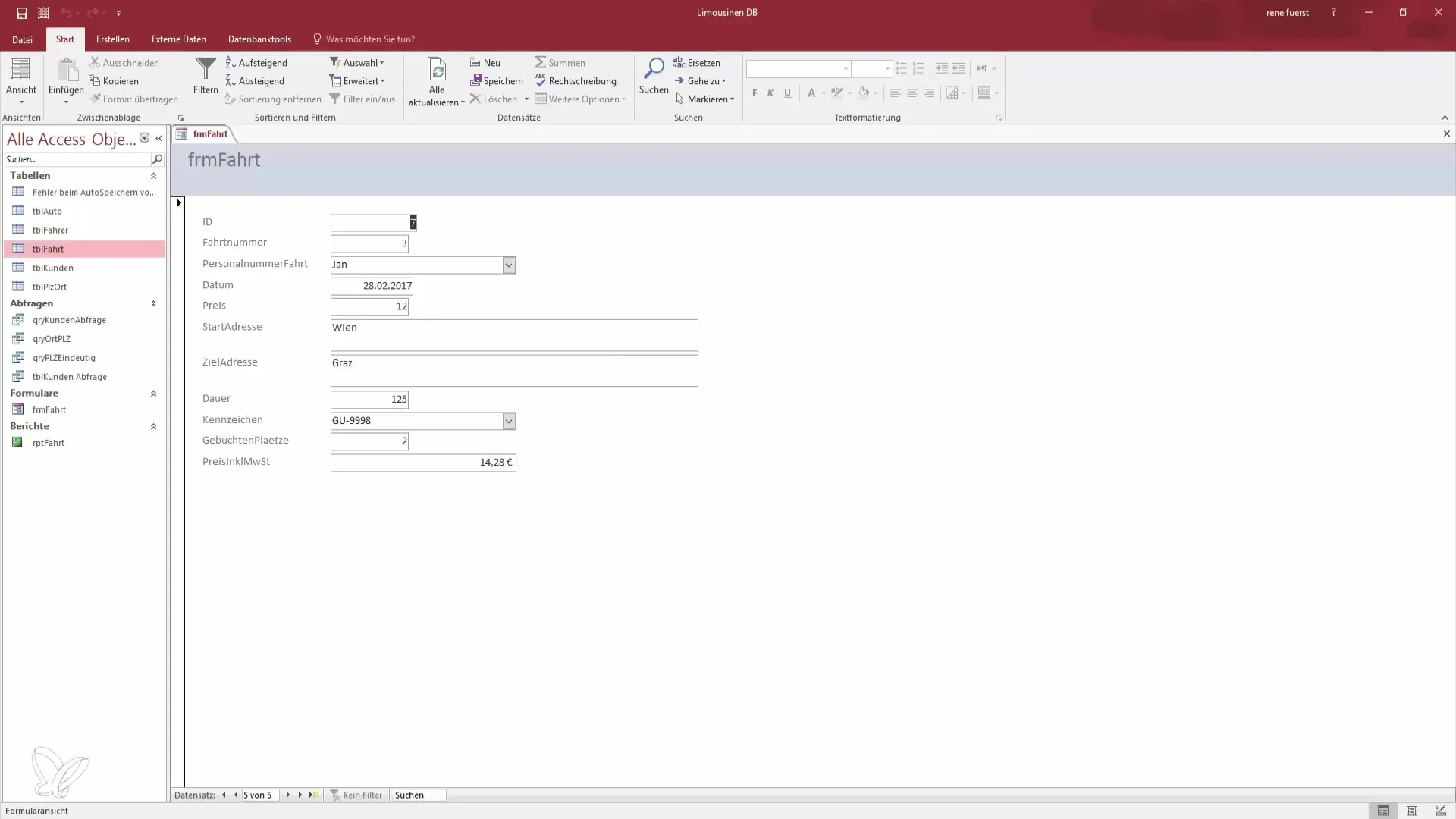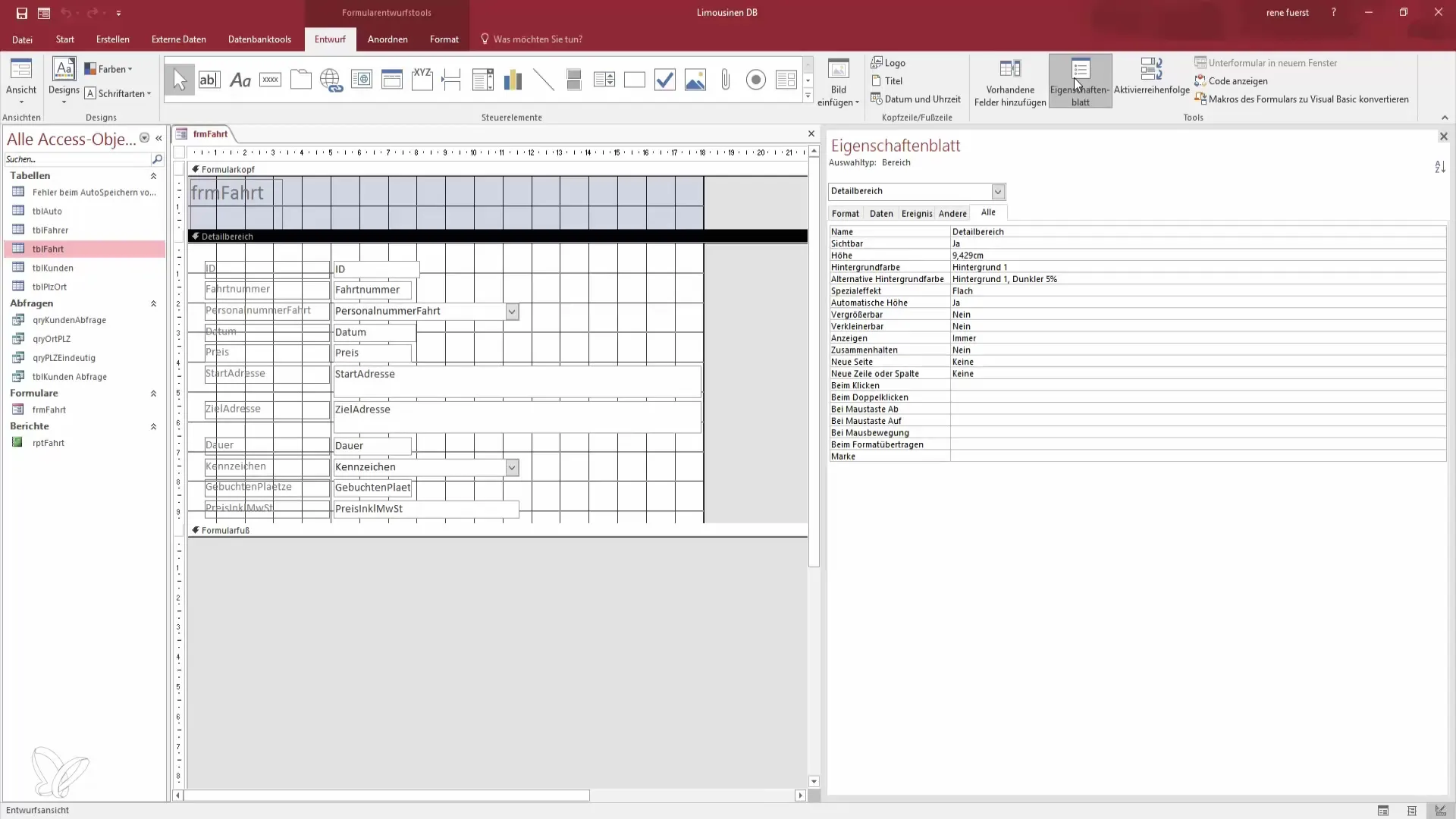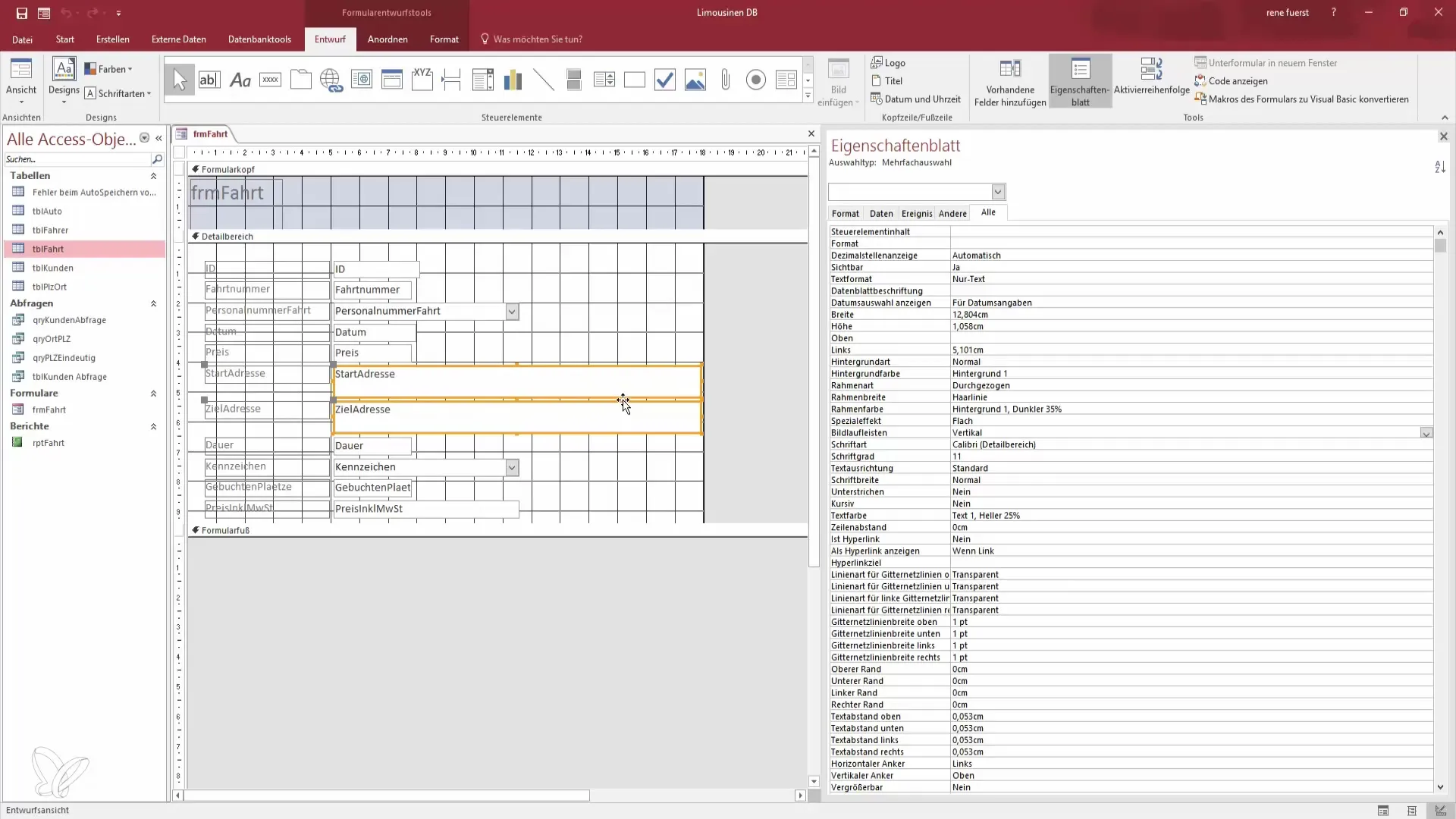Performing effective adjustments to forms in Access can significantly improve usability and clarity. In this tutorial, you will learn how to edit your form to meet your individual requirements. You will recognize how important it is to create a consistent and appealing layout that facilitates navigation and data processing.
Key insights
- Adjusting the height and width of the fields ensures a uniform appearance.
- Removing scrollbars enhances the user experience.
- Aligning the labels is crucial for readability and clarity.
Step-by-step guide
First, open the desired form in Access and switch to design view. Here, you will already see the properties sheet, which provides you with many options for customization.

To create a more uniform layout, it is essential to align all relevant fields. You will notice that these fields have different sizes and spacing. We want to change that to achieve a more professional appearance.
Click on the fields for the starting and destination addresses by hovering over them with the mouse and selecting them. Now you can adjust the height and width of the fields to ensure they are the same size.
To remove the scrollbars, look for the option "Scrollbars" in the properties sheet. Set the value to "None" to deactivate them and obtain a clearer view.
The next step is to match the height of the fields. You can do this by selecting one field, noting the height, and then copying that value into the height of the other relevant fields.

Once you have adjusted the heights, pay attention to the spacing between different elements. A directed spacing between the fields creates a harmonious overall appearance. Select the fields you want to adjust and move them up or down using the arrow keys.
When it comes to aligning the labels, you can do this through the format menu. Select the option for "right-align" to ensure consistent text alignment. Make sure that all labels of the same category are uniformly positioned.

Now comes the final touch: You can adjust the widths of the fields. Determine a uniform width that you like and apply it to all relevant fields. This could be, for example, 6 cm.
Once everything is arranged and formatted correctly, switch back to normal view to preview your form. Check whether everything looks as you envisioned. Pay attention to whether everything is readable and nicely arranged, without scrollbars or uneven spacing.
With these adjustments, you have created a professionally looking form that offers both you and users a better experience. In the next lesson, we will delve even deeper into specific customization options.
Summary – Form editing in Access: Become a data hero
This guide to editing and modifying an Access form provides you with the basics for a significant improvement of the user interface. With the right adjustments, you create a clear and user-friendly environment for working with data.
Frequently asked questions
How do I remove the scrollbars in my Access form?You can set the scrollbars in the properties sheet under "Scrollbars" and set it to "None".
How do I adjust the height of fields in Access?Select a field, note the height, and copy that value into the other fields.
How can I align the labels in Access?Select the labels and go to the format options to set the alignment to "right-align".
Can the form be used in print version after adjustments?Yes, the adjustments also affect the print view, making your form look professional.
Can I adjust multiple fields at once?Yes, you can select multiple fields and change their properties simultaneously.


